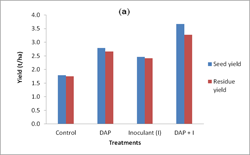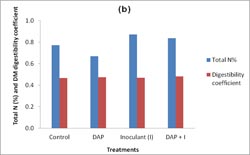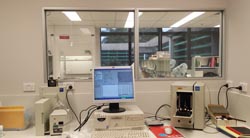Grain legumes produce a valuable grain crop for consumption or sale but they also produce residues that can be fed to livestock. As part of my PhD project I have been looking at variability among popular legume varieties and whether improved agronomic practices such as P fertilizer and inoculation, designed to increase grain yields, also affect residue yield and quality. Residue samples were collected from N2Africa input and variety trials plots established during the 2013/14 cropping season. A total of 1161 legume crop residue (common bean=652, chickpea 194, faba bean=255 and soyabean=60) samples were collected and ground with a hammer mill to pass a 1mm screen.
|
The collected sampleswerescanned using a Foss 6500 NIR spectrometer instrument at Central Queensland University (CQU) laboratory in Australia (See photo) and straw quality traits (Total N, dry-matter digestibility and fibre fractions) were predicted using existing north Australian forage calibrations developed from tropical forages. |
|
Significant variation in seed, residue and total biomass yields, harvest index (HI) and laboratory straw quality traits were observed among the widely grown legume crop varieties. There were substantial variations in nutritive value between botanical fractions (empty husk and straw) of common bean, chickpea, faba bean and soyabean. Inoculation and/or application of di-ammonium phosphate (DAP) fertilizer improved seed and crop residue yields (Fig. 2a) and had mixed effects on residue quality (Fig. 2b) in common bean. This highlights the possibility of improving livestock nutrition in crop-livestock systems of Ethiopia through agronomic interventions.
 |
 |
Fig. 2. Effect of di-ammonium phosphate (DAP) fertilizer and inoculation on (a) seed and residue yields, and (b) residue total nitrogen (N) content and dry-matter (DM) digestibility of common bean (variety Nasir) at Shalla in the 2013/14 season. |
NIRS calibration equations for legume crop residues in Ethiopia are being developed as part of the PhD study. A further study on farmers’ choices and rationale for how they use legume residues is also underway.
By Mesfin Dejene, PhD student at The University of Queensland, Australia)


